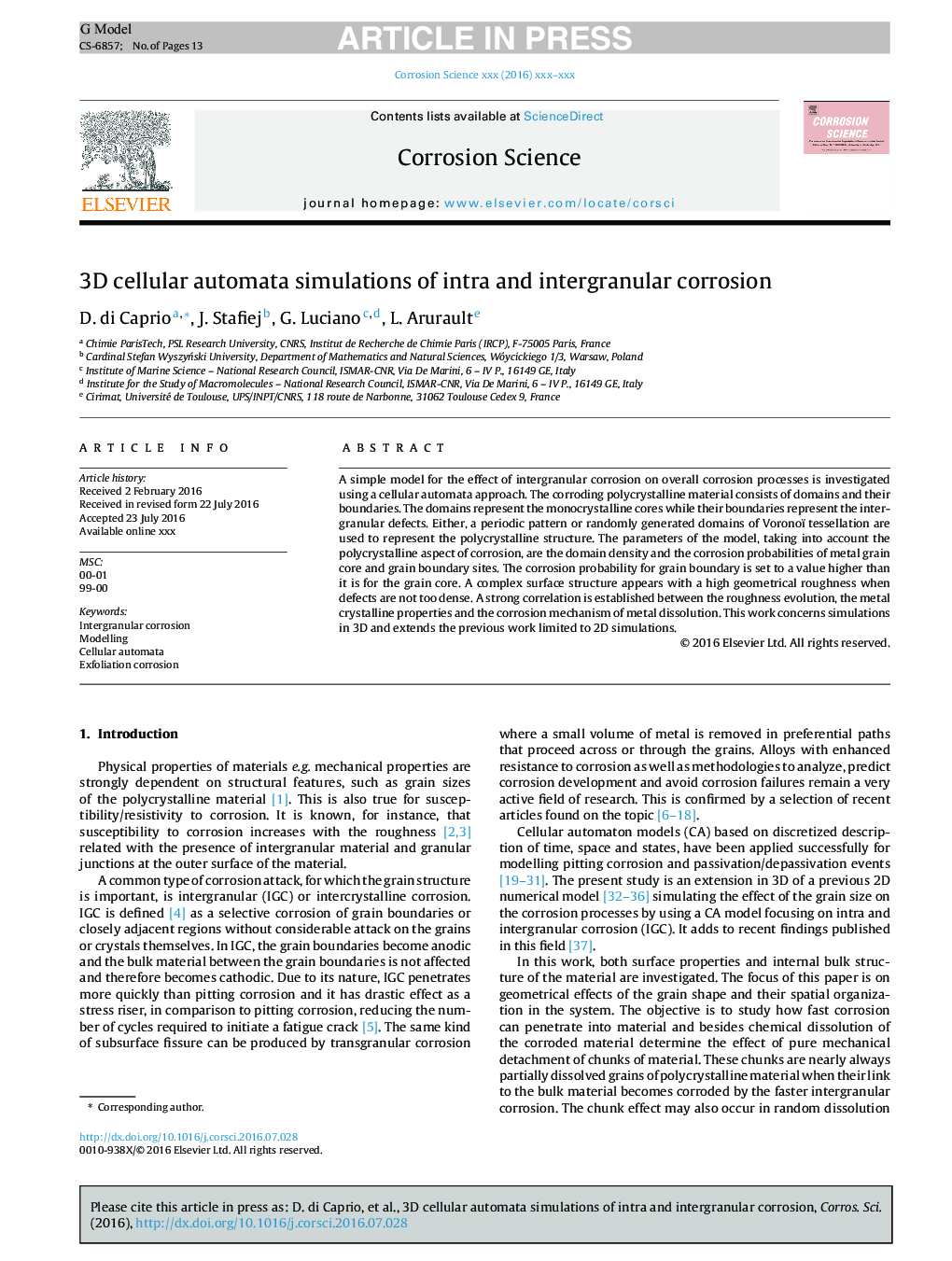| Article ID | Journal | Published Year | Pages | File Type |
|---|---|---|---|---|
| 5440134 | Corrosion Science | 2016 | 13 Pages |
Abstract
A simple model for the effect of intergranular corrosion on overall corrosion processes is investigated using a cellular automata approach. The corroding polycrystalline material consists of domains and their boundaries. The domains represent the monocrystalline cores while their boundaries represent the intergranular defects. Either, a periodic pattern or randomly generated domains of Voronoï tessellation are used to represent the polycrystalline structure. The parameters of the model, taking into account the polycrystalline aspect of corrosion, are the domain density and the corrosion probabilities of metal grain core and grain boundary sites. The corrosion probability for grain boundary is set to a value higher than it is for the grain core. A complex surface structure appears with a high geometrical roughness when defects are not too dense. A strong correlation is established between the roughness evolution, the metal crystalline properties and the corrosion mechanism of metal dissolution. This work concerns simulations in 3D and extends the previous work limited to 2D simulations.
Related Topics
Physical Sciences and Engineering
Materials Science
Ceramics and Composites
Authors
D. di Caprio, J. Stafiej, G. Luciano, L. Arurault,
